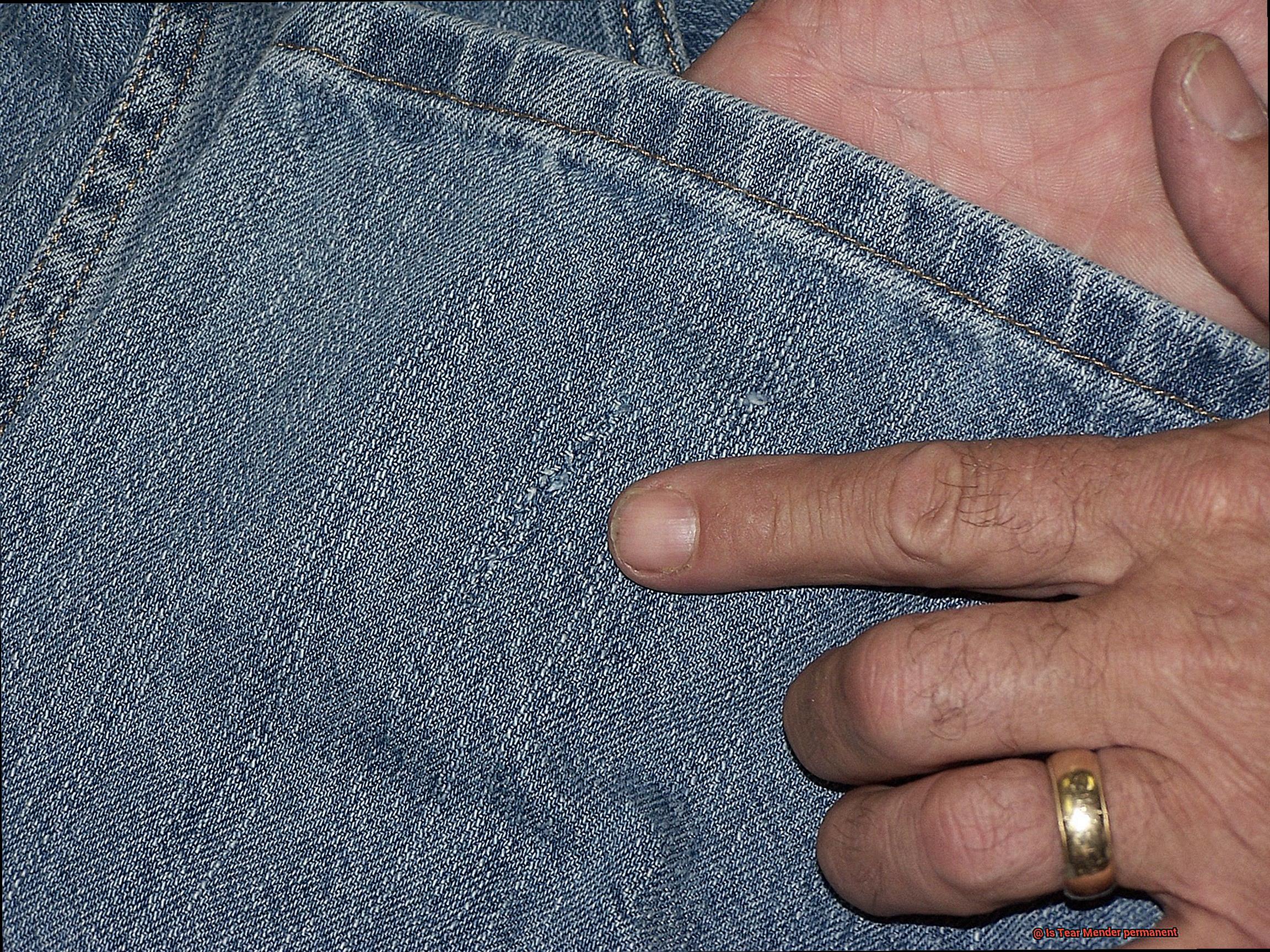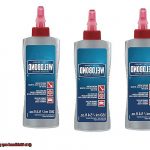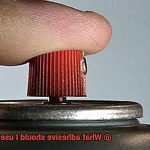Are you tired of constantly battling with your clothes, trying to keep them intact and presentable? Well, fear not. There’s a magical adhesive on the market called Tear Mender that claims to be the ultimate fix-all for fabric repairs. But let’s get real here – is Tear Mender really permanent? Can it truly save you from endless hours of sewing and patching?
In this blog post, we’re diving headfirst into the world of Tear Mender to uncover the truth about its permanency claims. We’ll take a close look at how this wonder product works, what it’s designed for, and whether it lives up to its promise of durability. Get ready to discover if Tear Mender is the holy grail of fabric repairs or just another temporary fix that’ll leave you feeling ripped off.
The Permanent Bond of Tear Mender
Contents
- 1 The Permanent Bond of Tear Mender
- 2 Factors Affecting the Permanence of Tear Mender
- 3 Types of Fabrics Suitable for Tear Mender
- 4 Proper Application Techniques for Optimal Results
- 5 Exposure to Extreme Temperatures and Chemicals
- 6 Repeated Washing and its Impact on the Bond
- 7 Additional Reinforcement or Sewing for Delicate Fabrics
- 8 Conclusion
Tear Mender has gained popularity as a go-to adhesive for repairing tears, holes, and damages in fabrics. Renowned for its ability to create a strong and durable bond, Tear Mender is trusted by DIY enthusiasts and professionals alike. But what exactly makes Tear Mender’s bond permanent? Let’s explore the factors that contribute to its long-lasting effects.
Unique Formula:
At the heart of Tear Mender’s success lies its unique formula. Crafted from natural latex, this adhesive offers exceptional elasticity and durability. Whether under stress or strain, Tear Mender maintains its bond, ensuring that your repairs stand the test of time.
Versatility:
Tear Mender is a versatile solution that can handle various materials such as fabric, leather, vinyl, and rubber. Its ability to adhere to this wide range of surfaces makes it an ideal choice for diverse repair projects. Whatever you’re working on, Tear Mender can create a strong bond that lasts.
Proper Application Process:
To achieve a permanent bond with Tear Mender, proper application is crucial. Begin by thoroughly cleaning the surfaces to be bonded, removing any dirt or debris. This step allows Tear Mender to establish a strong connection with the materials, enhancing the permanence of the bond. After application, give it at least 24 hours to cure and fully adhere to the surfaces. This curing time ensures that the bond created by Tear Mender becomes strong and permanent.
Flexibility:
In addition to its permanent bond, Tear Mender offers flexibility. Unlike some adhesives that become brittle over time, Tear Mender remains pliable even after curing. This flexibility allows the bonded materials to move and stretch without compromising the integrity of the bond.
Considerations:
While Tear Mender provides a strong and permanent bond for most repairs, there are a few factors to consider. Extreme temperatures or constant exposure to water may affect the longevity of the bond. In such cases, it is advisable to assess the specific repair needs and consult the manufacturer’s guidelines for optimal results.
Factors Affecting the Permanence of Tear Mender
Look no further than Tear Mender, the adhesive renowned for creating bonds that withstand the test of time. But what factors determine the permanence of this extraordinary glue? In this article, we will delve into the key elements that can either make or break the longevity of your Tear Mender repairs. So, grab your magnifying glass and embark on this enlightening journey with us.
Surface Material:
The type of material you are working with plays a pivotal role in determining how long your Tear Mender repairs will endure. This adhesive excels on porous surfaces like fabric, leather, and select plastics. These materials allow Tear Mender to infiltrate and bond effectively, resulting in a robust hold. Conversely, non-porous materials such as metal or glass may not provide the same level of adhesion, leading to a less enduring bond.
Application Technique:
The way you apply Tear Mender can also impact its permanence. It is crucial to meticulously follow the manufacturer’s instructions to ensure proper application. Applying an ample amount of glue uniformly across the surface and firmly pressing the materials together cultivates a tenacious bond. If Tear Mender is applied sparsely or unevenly, it may not adhere as securely, compromising its longevity.
Pre-treatment of Surfaces:
Certain surfaces necessitate pre-treatment before applying Tear Mender for optimal results. For instance, fabrics with loose or frayed threads benefit from trimming and thorough cleaning prior to application. This ensures that Tear Mender binds directly to the fabric fibers rather than loose threads, bolstering its durability. Similarly, cleaning and degreasing surfaces like leather or plastic eradicate contaminants that may impede adhesion.
Environmental Conditions:
The environment in which you employ Tear Mender can influence its permanence. Factors such as temperature and humidity impact the glue’s curing process and bond strength. Extreme temperatures or high humidity levels can impede curing, potentially compromising the bond’s durability. It is advisable to apply Tear Mender under moderate temperature and humidity conditions for optimal results.
Stress and Usage:
The amount of stress or strain placed on the bonded area can affect how long Tear Mender endures. While Tear Mender boasts flexibility, excessive stretching or pulling can gradually weaken the bond over time. Additionally, frequent usage or exposure to repetitive motions can gradually diminish its strength. Consider the intended use of the repaired item and assess whether Tear Mender can withstand the anticipated stress or strain.
Types of Fabrics Suitable for Tear Mender
Look no further than Tear Mender, the powerful adhesive that can work miracles on fabrics. But which fabrics are suitable for this magical glue? Let’s explore the world of fabrics and discover the perfect matches for Tear Mender.
Denim – The True Companion:
Denim, the tough and reliable fabric used in jeans and jackets, is an ideal match for Tear Mender. With its durable and tightly woven nature, denim provides a sturdy surface for the adhesive to work its magic. Whether you’re repairing a stubborn rip or adding patches to your favorite denim piece, Tear Mender will bring your denim dreams to life.
Canvas – Embrace Endless Possibilities:
Canvas, the versatile fabric adorning outdoor furniture, tents, and bags, is another perfect partner for Tear Mender. Its heavy-duty nature withstands the harshest elements, making it an excellent choice for long-lasting repairs. From mending a camping tent to restoring an old canvas bag, Tear Mender will have your back on all your creative adventures.
Cotton – A Superhero in Disguise:
Cotton, the everyday hero found in t-shirts, dresses, and skirts, is also compatible with Tear Mender. This versatile fabric can be easily repaired using Tear Mender without causing any damage. Say goodbye to those bothersome rips in your beloved cotton shirt and embrace a world where tears are no more.
Leather – Boldness Meets Beauty:
Leather jackets, shoes, and accessories can now be effortlessly repaired with Tear Mender. Leather’s timeless durability demands a robust adhesive like Tear Mender to ensure a secure bond that lasts. So don’t let your worn-out leather items gather dust in the attic – give them a new lease on life with Tear Mender’s transformative touch.
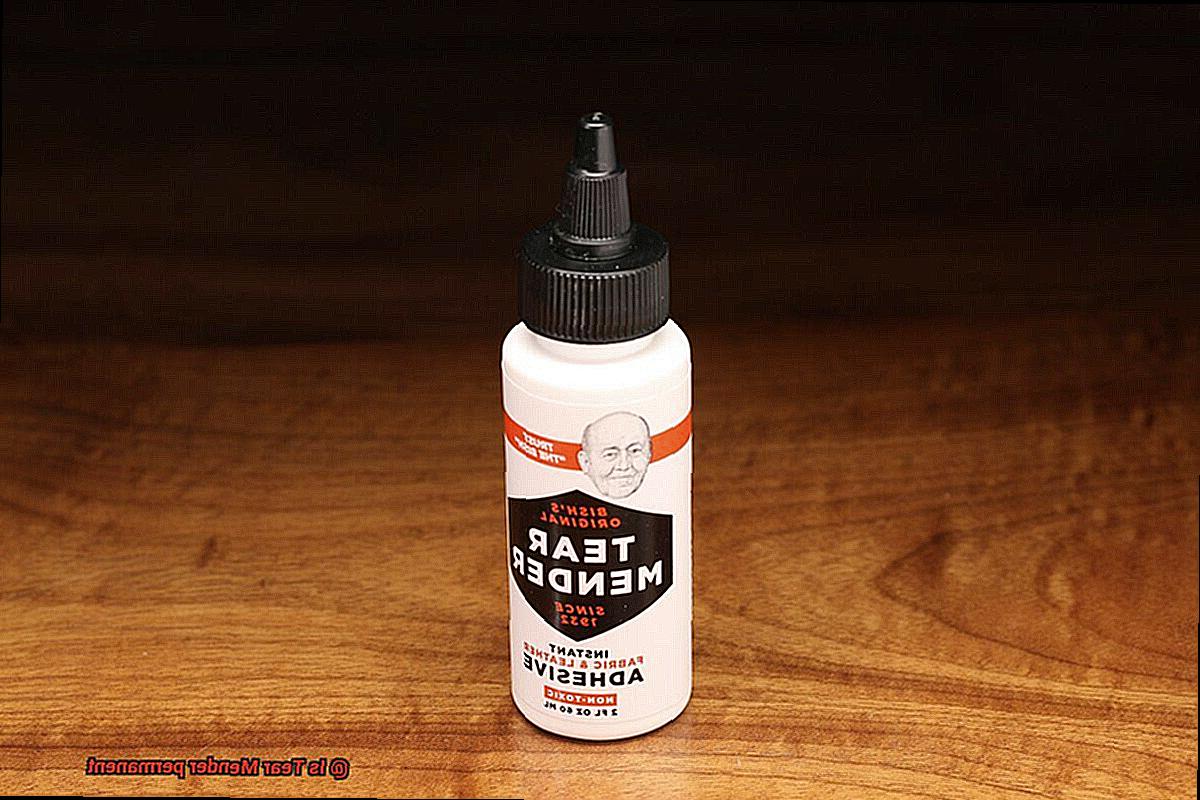
Other Natural Fabrics – Wool and Silk:
Tear Mender also works its magic on other natural fabrics such as wool and silk. These delicate yet resilient fabrics can be repaired using Tear Mender, but it’s always wise to test the adhesive on a small, inconspicuous area first to ensure a seamless match. With Tear Mender by your side, your favorite wool sweater or silk blouse will be restored to its former glory.
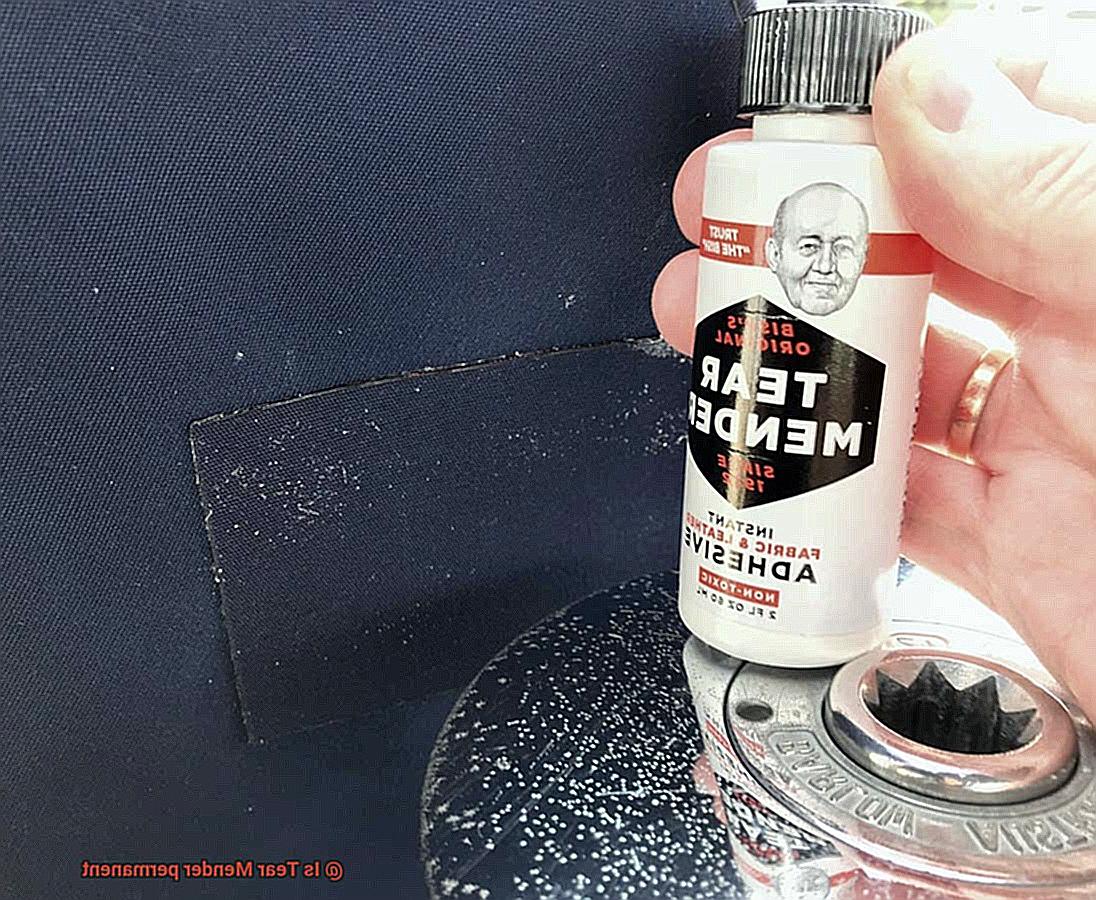
Proper Application Techniques for Optimal Results
Achieving optimal results with adhesives requires more than just a hope and a prayer. Tear Mender, the magical adhesive that works wonders on a variety of fabrics, is no exception. To unlock its true potential, proper application techniques are key. So, let’s delve into the world of Tear Mender and discover the secrets to success.
First and foremost, never underestimate the power of following the manufacturer’s instructions. Tear Mender is a unique adhesive that demands specific application techniques to ensure its permanence. Skipping this crucial step would be like trying to build a sandcastle without any sand – it’s just not going to hold up.
Before diving into the application process, take a moment to prepare the surface properly. Cleanse it from the clutches of dirt, dust, and oils. This will create a pristine canvas for Tear Mender to work its magic. Imagine trying to paint a masterpiece on a dirty canvas – it just won’t have the same impact.
When it comes time to apply Tear Mender, remember this golden rule: double your pleasure, double your bonding power. Apply the adhesive to both surfaces that need to be bonded. This ensures a strong and lasting hold that will withstand the test of time. You can choose to use a brush for a more delicate touch or unleash your inner Picasso by applying it directly from the bottle onto the surfaces.
Now, here’s where things get interesting – the art of even spreading. Just like spreading butter on warm toast, you want to make sure Tear Mender covers every nook and cranny of the area to be bonded. But be warned, my friend, less is more in this scenario. Avoid excessive application as it may hinder the bonding process. Remember, we’re aiming for perfection here, not an adhesive overload.
Pressure is the secret ingredient that activates Tear Mender’s bonding properties. Think of it as the magical wand that brings everything together. The amount of pressure needed depends on the size and nature of your project. You can use your trusty hands to apply gentle force or bring in reinforcements like a roller to ensure an iron-clad hold. It’s all about finding the right balance between power and finesse.
Patience is a virtue, especially when it comes to Tear Mender. After applying the adhesive, allow it ample time to dry and cure properly. This ensures its permanence and durability. Fighting the urge to touch or use the bonded materials prematurely may be challenging, but trust me, it’s worth the wait. Rome wasn’t built in a day, and neither are strong bonds.
To truly excel in the art of Tear Mender application, consider the environment in which you work. Temperature and humidity can impact drying time and the bonding process. So, make sure conditions are just right for Tear Mender to work its magic. Think of it as creating the perfect habitat for a rare species – optimal conditions yield optimal results.
Exposure to Extreme Temperatures and Chemicals
Exposure to extreme temperatures and chemicals can have significant effects on the effectiveness of Tear Mender adhesive. Known for its durability and long-lasting properties, Tear Mender is a reliable choice for many bonding needs. However, it is crucial to consider the specific environmental conditions in which it will be used.
Let’s start by exploring the impact of extreme temperatures on Tear Mender. When subjected to high temperatures, this adhesive may soften or even melt. As a result, its bonding strength decreases, compromising its ability to hold materials together securely. On the other hand, extremely low temperatures can render Tear Mender brittle and inflexible, making it difficult for it to adhere properly. To ensure optimal performance, it is vital to avoid exposing Tear Mender to these temperature extremes.
Moving on to chemical exposure, Tear Mender generally stands up well against common household substances like water, oil, and mild detergents. However, harsh chemicals or solvents can pose a problem. These substances have the potential to break down the adhesive or alter its composition, resulting in a weakened bond. Therefore, caution must be exercised when using Tear Mender around strong chemicals.
It is important to note that Tear Mender is not specifically formulated for extreme temperature or chemical environments. While it can withstand some exposure, prolonged or intense conditions may compromise its effectiveness. If your project is likely to encounter such conditions, considering alternative adhesives specifically designed for these environments may be advisable.
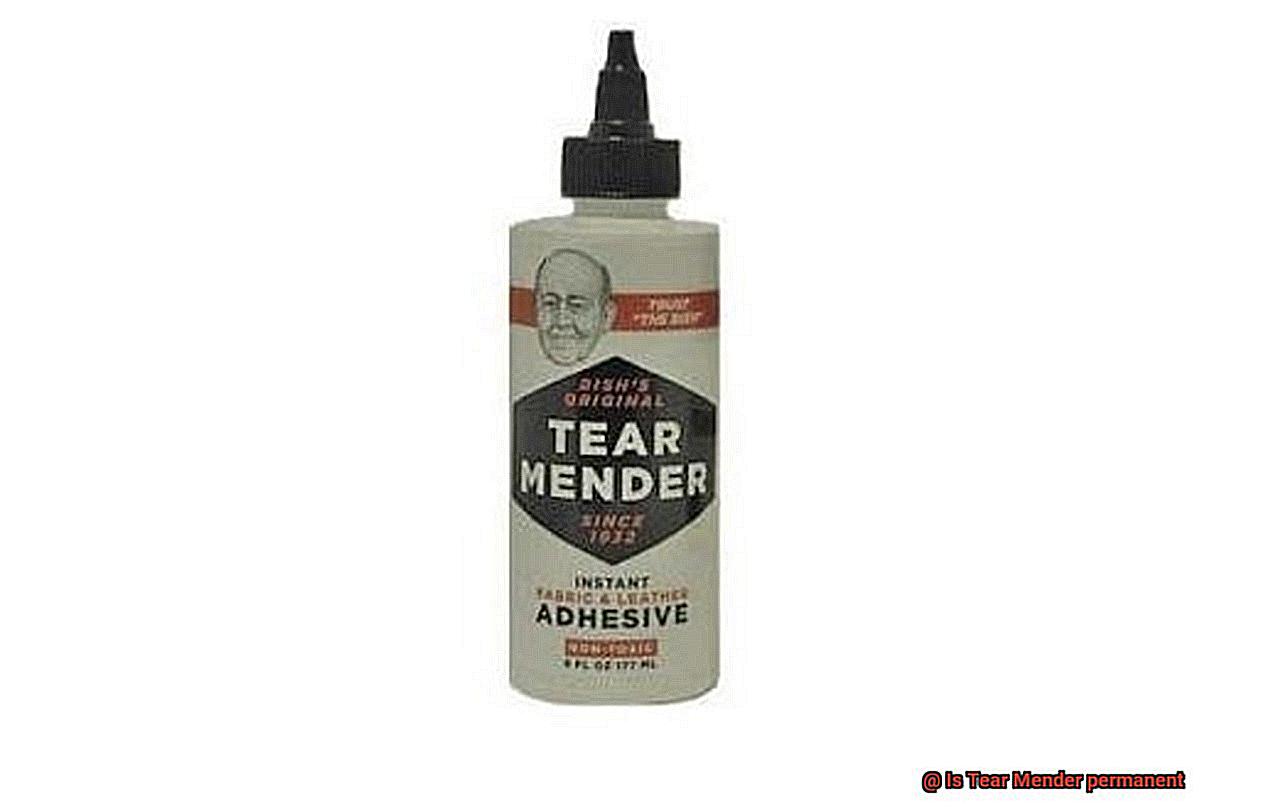
To achieve the best results with Tear Mender, it is crucial to follow the manufacturer’s instructions and create optimal environmental conditions during application and drying. Remember, patience is key.
Repeated Washing and its Impact on the Bond
This powerful glue has earned a reputation for its ability to repair tears and bond fabrics with unmatched strength. But what happens when Tear Mender faces the ultimate test of repeated washing?
In this blog post, we’ll delve into the impact of frequent laundering on Tear Mender’s bond strength. From the type of fabric to the washing method, we’ll explore all the crucial factors that influence this adhesive’s resilience in the face of relentless cycles. So, if you’re ready to uncover the secrets of Tear Mender’s endurance, read on.
Fabric Type:
The texture of your fabric is a key player in determining Tear Mender’s bond strength. Smooth surfaces pave the way for a stronger and longer-lasting bond, while rough or textured fabrics may pose more challenges. So, whether you’re bonding delicate silk blouses or smooth cotton sheets, expect Tear Mender to flex its adhesive muscles and create an unbreakable union.

Washing Method:
Now, let’s talk about the washing method itself. The way you handle your laundry can make or break Tear Mender’s bond. Harsh conditions like scorching temperatures and vigorous agitation gradually wear down its adhesive prowess. To safeguard Tear Mender’s might, opt for gentler wash cycles with lower temperatures. By treating your repaired items with care, you can ensure that this adhesive superhero remains steadfast even in the face of relentless turbulence.
Frequency of Washing:
How often you toss your items into the wash also affects Tear Mender’s bond strength. While it can withstand occasional trips to the laundry room without significant loss of adhesion, repeated exposure to water and detergents gradually weakens its grip. Keep this in mind when using Tear Mender on frequently washed items like your beloved jeans. Over time, the bond may start to show signs of fatigue.
Precautions for an Indestructible Bond:
To maintain an unyielding bond under the assault of repeated washing, follow these precautions:
- Adhere to the manufacturer’s instructions for application and curing time.
- Embrace gentler wash cycles with cooler temperatures, sparing your bond unnecessary stress.
- Bid farewell to harsh detergents and welcome mild or specialized cleaners designed for delicate fabrics.
- If your bond succumbs to the relentless cycles, clean and dry the affected areas thoroughly before reapplying Tear Mender.
Additional Reinforcement or Sewing for Delicate Fabrics
Delicate fabrics require careful consideration when it comes to repairs. While Tear Mender glue is often used as a quick fix, is it the best solution? In this blog post, we will compare and contrast the advantages and disadvantages of using additional reinforcement or sewing versus Tear Mender for repairing delicate fabrics. If you’re curious about the best ways to repair delicate fabrics, keep reading.
Additional Reinforcement:
One option for repairing delicate fabrics is to use additional reinforcement. This involves adding another layer of fabric or a patch to strengthen the damaged area. The advantages of reinforcement include added strength and stability, preventing further damage over time. You also have the flexibility to choose a matching or contrasting fabric for a decorative touch. However, keep in mind that this method requires more effort and may not be suitable for intricate designs.
Sewing:
Sewing is another technique that can be used to mend delicate fabrics. For small tears or holes, hand sewing with a fine needle and matching thread can be effective. Choose discreet stitches to avoid visible marks on the fabric. Alternatively, using a sewing machine with delicate fabric settings can provide a more secure and durable fix for larger repairs. Sewing allows for greater control over the repair and ensures a seamless finish.
Tear Mender:
While Tear Mender can be a convenient option for quick fixes, it may not always provide a permanent solution for delicate fabrics. This adhesive is designed to bond fabrics together but may not withstand repeated washing or wear and tear. Certain delicate fabrics may experience residue or discoloration from Tear Mender, further deteriorating their appearance.
Conclusion:
When deciding between Tear Mender, additional reinforcement, or sewing for delicate fabrics, consider the specific needs of the fabric and the extent of the damage. For small tears or holes, sewing or reinforcement may be the better option for a more permanent and visually pleasing repair. However, if the damage is minimal and Tear Mender can provide a quick and temporary fix without compromising the fabric’s appearance, it can be a viable solution.
IxCDaIRT-1U” >
Conclusion
To sum it up, Tear Mender packs a punch as an adhesive that delivers a robust and enduring bond for fabric repairs. Crafted from natural latex, its one-of-a-kind formula boasts remarkable elasticity and durability, ensuring that your fixes will withstand the test of time. Not only is Tear Mender versatile enough to adhere to various materials like fabric, leather, vinyl, and rubber, but it also remains pliable even after curing. This means that your bonded materials can move and stretch without compromising the integrity of the connection.
However, achieving a permanent bond with Tear Mender requires careful application. Make sure to thoroughly clean the surfaces you want to bond and allow at least 24 hours for proper curing. By following these steps, you’ll ensure a strong and long-lasting connection. Keep in mind though that extreme temperatures or constant exposure to water may affect the longevity of the bond. It’s always wise to assess your specific repair needs and consult the manufacturer’s guidelines for optimal results.
When dealing with delicate fabrics, you might prefer additional reinforcement or sewing over Tear Mender. These methods offer added strength and stability while preserving the fabric’s appearance. Nevertheless, Tear Mender still comes in handy for quick fixes on minimal damage without compromising the fabric’s aesthetic.

